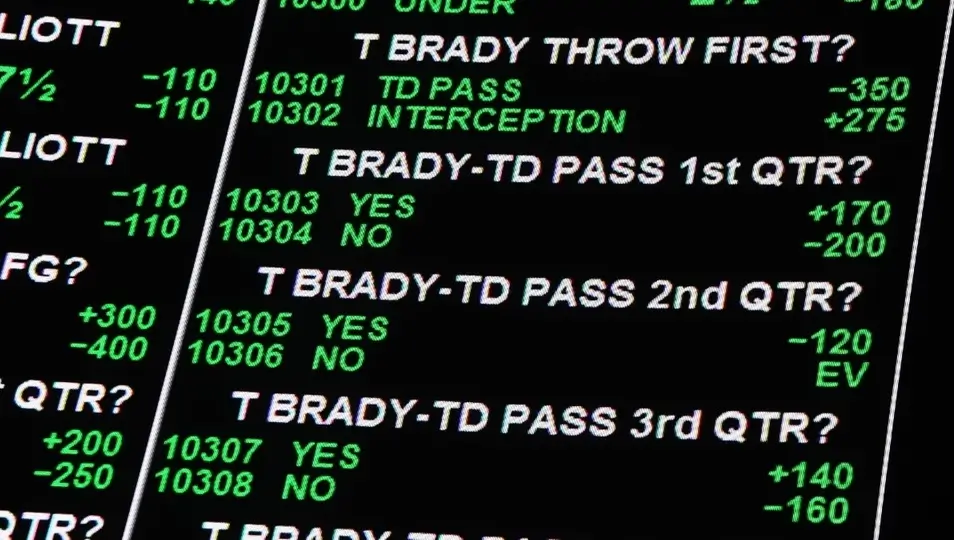Explaining how betting odds work and how to read betting odds

Sports betting can be difficult to get into if you’re unfamiliar with all of various mechanics and definitions. One of the biggest hurdles is deciphering the unique betting lingo that is used in each region. Between Europe, North America, and Asia, there’s very little agreement on what to call anything when it comes to bookies, bookmakers, and betting providers.
That applies to the actual numbers as well. North America, Europe, and Asia all have different methods for explaining to bettors how much they stand to win from a successful wager, and even within those regions there can be variations depending on the sport and other contributing factors.
Given how much there is to talk about with this, it’s worth doing a deep dive on betting odds. How do they work? What do they mean? And how does a punter use them? This guide will break all of it down for you.
What are betting odds and why do betting odds exist?
It might feel strange that betting odds exist at all. Why can’t a $100 bet on something simply yield $100 in return, and that’s the end of it?
The primary reason for this is that not all outcomes have an equal chance of occuring. If a professional hockey team is going to play a game against an amateur team, it’s highly unlikely that the professional team would lose. As such, running 50-50 odds would make betting on the professional team untenable for the bookmaker and would leave betting on the amateur team unappealing for bettors.
With this in mind, betting sites offer odds that tend to reflect the probabilities of a specific outcome happening. Because the professional team would have a significantly greater chance of winning, a successful wager on them would give a smaller return. Meanwhile, bettors are incentivized to take a risk on the amateur team with the offer of a much larger return if they should beat the odds.
All that said, betting odds are rarely perfectly even. As an example, the Super Bowl and other NFL games oftentimes have a betting market on the outcome of the opening coin toss, which has almost perfectly even odds of landing on heads or tails.
Despite this, betting sites won’t offer perfectly even returns on a successful bet on a coin flip. This difference is called the margin, and it is the cut that betting operators take in order to cover operational costs.
How are betting odds determined?
Opening betting lines are rooted in the projected odds of success on a bet. As the odds of a successful bet increase, the payout decreases. As the odds of success on a bet go down, the payout for a win increases.
Mathematically speaking, if someone bets on a coin flip landing on heads they have a 50% chance of winning which should yield a 100% return on their bet. If someone bets on a roll of a six-sided die, they have a one in six chance of winning, or about 16.7%. That should yield a 500% return.
However, if a person bets that a roll on a six-sided die will land on any number except for one, they have a five-in-six chance of winning, or approximately an 83% chance of success. That yields a return of just 20%.
Lines don’t stay constant. In order to mitigate potential losses, betting sites will shift betting lines based on the volume and size of the bets being made on a specific outcome.
Possibly the greatest example of this came in 2018 with the boxing match between Floyd Mayweather and Conor McGregor. Mayweather is the most successful boxer of his generation while McGregor was set to make his boxing debut in the match. This saw the opening lines suggest that Mayweather had odds of winning over 95%.
But McGregor has an enormous fanbase in regions that greatly enjoy sports betting. When McGregor’s fans all rushed to wager on him it resulted in the betting lines shifting in an enormous way to the point where the implied odds of victory for Mayweather were closer to 80%.
While that shift from 95% to 75% sounds like a minor difference, a winning $100 bet on Mayweather on the opening line would have yielded just a $5 return. After the line moved based on McGregor’s fans coming out in droves, a winning $100 bet on Mayweather paid out as much as $20.
Mayweather won the fight in decisive fashion with those late comers reaping the benefits of the line movement that came from McGregor’s large fanbase.
How to read betting odds
To start reading betting odds, bettors need to pull up a list of markets to find the various odds that are being offered by a bookmaker. A specific game or match will typically have a number of different markets including picking the winner, handicaps, and other side markets that address various specific nuances of the contest.
Once the bettor finds the markets they’re interested in, they will typically see the betting odds in the form of a number which is possibly accompanied by a plus or minus symbol. The most common ways to present betting odds are:
- Decimal odds (2.5)
- American odds (+150)
- Fractional odds (3/2)
- Hong Kong or Malay odds (1.500)
Worth noting is that 2.5, +150, 3/2, and 1.500 all represent the exact same payouts for a winning bet despite looking very different. Here’s how each one of these systems work and how to easily understand each system.
How to read decimal odds in sports betting
Decimal odds are by far the easiest and most convenient way to understand how much one stands to win while betting. As such, it’s generally the most popular system in the world and enjoys use to some degree in almost every region.
Decimal odds show how much a player stands to walk away with after a successful wager. This can be done simply by multiplying the betting line by the amount that is being bet.
For example, imagine that a punter places a $10 bet that Team A will defeat Team B at 2.5 odds. If Team A is victorious, the punter will walk away with $25 for a profit of $15. Because of that intuitive nature, decimal odds are frequently used around the globe.
How to read fractional or UK odds in sports betting
Fractional odds are the standard in the United Kingdom and have their history in horse racing. They work somewhat similarly to decimal odds, but only really address how much a punter will profit rather than how much they actually walk away with in total.
To calculate how much one stands to win from sports betting with UK odds, one needs to combine the faction with the amount they’re wagering. This will determine the amount they profit, which is added to the initial bet that they placed.
Going back to the previous example, if a punter throws down $10 on Team A to beat Team B at 3/2 odds they will receive 3/2 of $10 in profit, or $15. As with the 2.5 decimal odds, they would walk away with $25 in their pocket at the end of the game.
How to read Hong Kong or Malay odds in sports betting
Hong Kong odds, Malay odds, or Chinese odds are most commonly used in Asia.
Hong Kong odds work as something of a middle ground between UK odds and decimal odds. As with UK odds, Hong Kong odds only really address the winnings rather than the initial bet, but like decimal odds, this is represented in decimal form. This is more straightforward than it sounds.
Once again, imagine betting $10 on Team A to defeat Team B at odds of 1.500. All one needs to do is multiply $10 by 1.500 to determine that they will make $15 in profit, and once again the bettor would walk away with $25 in total.
How to read American or moneyline odds in sports betting
American odds, also referred to as plus-minus or moneyline odds, can be an awkward system. It works on the idea of people looking to either bet with $100 or win $100. They’ve become the go-to system for combat sports, with MMA broadcasts often utilizing the American betting odds to indicate who the favorite and underdog is for an upcoming fight.
The favorite to win the contest is represented as a team with a – symbol next to its line, with the – representing how much a punter would need to wager in order to win $100 profit with a successful bet. An underdog is denoted with a + and shows how much the punter would win with a successful $100 bet.
Going back to Team A vs. Team B, a $10 bet on Team A winning at +150 odds would pay $15 for $25 total. While that’s easy enough, things get convoluted when it comes to betting on favorites. If a punter bets $10 on Team A to win and the odds are -200, that would pay out $5 for a total of $15.
Indonesian odds are actually an offshoot of American odds, but are represented with a smaller number. Instead of +150 or -200, the odds are represented as +1.5 or -2.0, respectively.
How to convert betting odds
Converting betting odds can be annoying to do manually, but luckily there are many different entities that offer quick and effective means of converting betting odds. Simply Googling “betting odds converter” will yield a number of results that will allow bettors to simply type in a specific line and get its equivalent in every major way of presenting betting odds as well as the implied odds of victory.
Certain betting sites also offer players the ability to change what odds system is shown to the punter. This can be done in different ways depending on the site, but can most commonly be found in the top right corner near language selection or in the settings menu.

